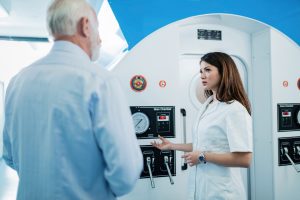In the fast-paced world of healthcare, precision and safety are critical. Every diagnostic image produced must be accurate, and every patient who undergoes an X-ray deserves protection from unnecessary radiation exposure. This is where X-ray inspection plays a vital role. While many medical professionals focus on patient care and imaging results, it’s the consistent evaluation of X-ray equipment that ensures both accuracy and safety behind the scenes.
X-ray inspection is more than a regulatory obligation. It is a safeguard for patients, staff, and the facility itself. By understanding what it is, why it matters, and what requirements exist, healthcare facilities can stay compliant and ensure top-quality imaging services.
Understanding X-Ray Inspection
So, what exactly is X-ray inspection? In healthcare, it is the process of thoroughly evaluating X-ray machines to ensure they function properly, meet radiation safety standards, and comply with federal and state regulations. Inspections are conducted by certified professionals who test everything from radiation output and image quality to shielding, calibration, and safety controls.
Unlike routine maintenance, which focuses on keeping equipment operational, inspections focus on compliance, performance verification, and radiation safety. For facilities in Texas, this often includes adhering to state-specific rules, where services such as X-ray safety inspection services Texas are designed to meet both state and federal expectations.
Why X-Ray Inspection Matters in Healthcare
The importance of inspection goes far beyond ticking a compliance box. At its core, it ensures that patients are not exposed to unnecessary risks and that healthcare providers can rely on their imaging technology for accurate results.
Protecting Patients and Staff
Every X-ray procedure involves some level of radiation exposure. Inspections verify that the dose levels are within safe limits, shielding is effective, and protocols are properly followed. This minimizes unnecessary exposure for patients and safeguards staff who work with these systems daily.
Ensuring Accurate Diagnoses
When X-ray machines are not properly calibrated, image quality can be compromised, leading to unclear or misleading results. Regular inspection ensures that machines produce sharp, reliable images that physicians can trust when diagnosing conditions.
Compliance and Legal Protection
Healthcare facilities are subject to both federal and state regulations. Regular inspections help clinics avoid penalties, fines, or operational disruptions. Partnering with experts, such as a State EPE X-ray Inspection Company in Texas, ensures that all documentation and compliance standards are met.
Extending Equipment Lifespan
Inspections often detect early signs of equipment wear, misalignment, or malfunction. Addressing these issues promptly can extend the lifespan of expensive imaging systems, saving facilities from unexpected breakdowns and costly repairs.
Requirements for X-Ray Inspection
The requirements for X-ray inspection vary depending on the state, type of facility, and equipment used. In healthcare, they typically include both federal guidelines and state-specific regulations.
Facilities must maintain updated inspection reports, often required annually or biannually, depending on the type of machine and its usage. Documentation must be readily available for review during audits or compliance checks. Inspections generally include:
- Measurement of radiation output to confirm safety standards.
- Verification of shielding in walls, doors, and equipment.
- Calibration of machines to maintain accurate imaging quality.
- Review of safety protocols for operators and staff.
In Texas, inspection services are often handled by licensed providers who specialize in X-ray safety inspection services Texas to ensure practices meet the requirements set by state health authorities. This includes working with organizations like a State EPE X-ray Inspection Company in Texas, which are authorized to perform compliance-based evaluations.
The Bigger Picture: X-Ray Inspection as a Preventive Measure
One of the most overlooked benefits of inspection is prevention. Instead of waiting for problems to arise, inspections help detect issues early. Whether it’s a minor calibration issue or a malfunctioning sensor, inspections ensure that problems are resolved before they affect patient care or cause expensive downtime.
This proactive approach not only reduces operational risks but also builds trust with patients. When patients know their healthcare provider prioritizes safety and compliance, it strengthens the reputation of the facility and enhances overall care quality.
The Future of X-Ray Inspection in Healthcare
As digital imaging technology continues to advance, inspections will evolve as well. Modern digital X-ray systems require different calibration and compliance checks compared to traditional machines. This makes professional inspection services even more critical, as healthcare providers must adapt to changing standards while maintaining efficiency.
Facilities that embrace regular inspections will not only meet compliance requirements but also stay ahead in delivering high-quality diagnostic care. In states like Texas, where regulations are regularly updated, working with a trusted partner ensures smooth operations and continued patient safety.
FAQs
1. How often should X-ray inspection be performed in healthcare facilities?
Most facilities are required to have inspections annually or biannually, depending on state regulations and equipment type. Texas facilities often follow state-specific schedules to stay compliant.
2. Who is authorized to perform X-ray inspections in Texas?
Only certified professionals, such as those from a licensed provider or a State EPE X-ray Inspection Company in Texas, can legally perform inspections and issue compliance documentation.
3. What happens if an X-ray machine fails inspection?
If a machine fails, immediate corrective action is required. The facility must fix the issue, document the repair, and in some cases, undergo a re-inspection before continuing use.
4. Are X-ray inspections different for digital systems compared to traditional systems?
Yes. Digital X-ray systems require specialized calibration and checks to ensure image quality and radiation safety, which may differ from older analog machines.
5. How do inspections help save costs for healthcare facilities?
By identifying problems early, inspections prevent costly breakdowns, reduce downtime, and extend equipment lifespan while helping facilities avoid expensive emergency repairs.
Conclusion
In healthcare, X-ray inspection is more than a compliance requirement. It is a critical practice that ensures patient safety, staff protection, accurate diagnostics, and long-term equipment reliability. By investing in professional inspection services, especially through trusted providers in Texas, healthcare facilities can maintain compliance, reduce risks, and deliver the highest standards of care.
For clinics, hospitals, and veterinary facilities across Texas, partnering with an experienced provider of X-ray safety inspection services ensures peace of mind and reliable imaging performance. In the end, regular inspection is not just about regulations. It is about safeguarding health and enhancing the quality of care.




